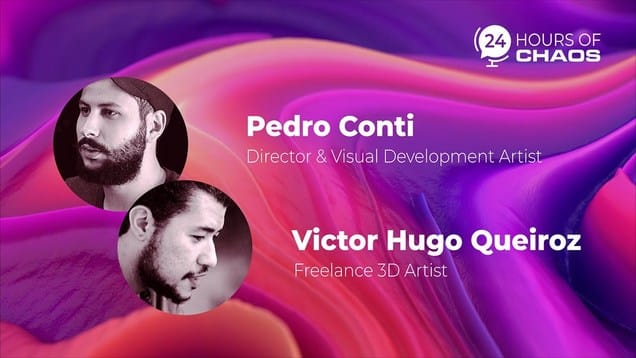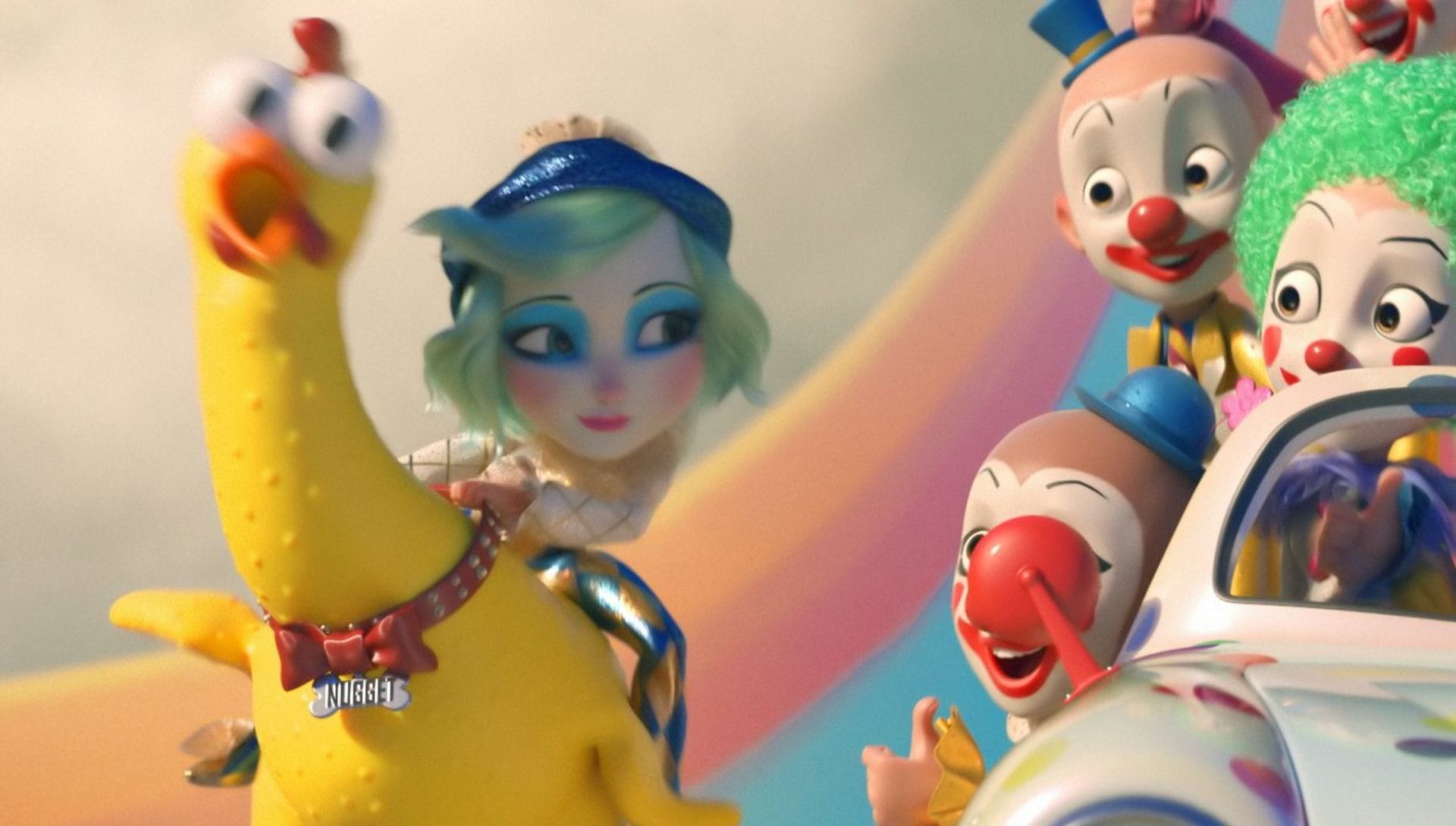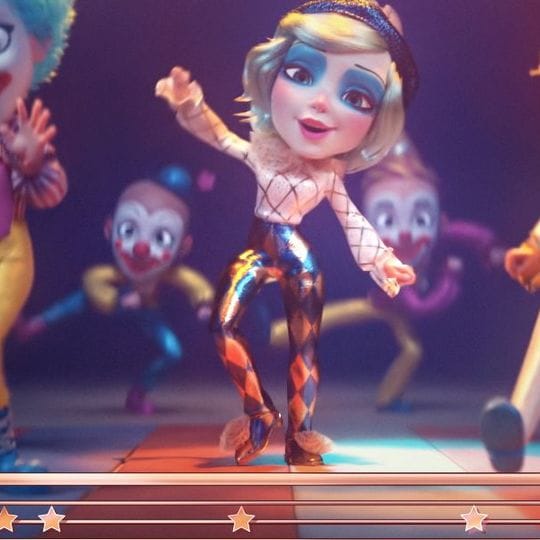CG artist Pedro Conti had just 6 weeks to deliver high-quality content for musical megastar’s latest promo. Here’s how V-Ray for 3ds Max helped him hit deadlines.
The music video for Katy Perry’s “Smile” had to be bright and colorful to match the song’s catchy, upbeat nature — and that’s exactly what it achieves. The promo — which transports the musical megastar into a bittersweet video game world — gels so perfectly with the song that it’s hard to separate the two.
Contributing to the animated parts of the videos is CG supervisor and artist Pedro Conti, who we last spoke to about his sweet-natured music video for Ron Artis II’s “In My Heart.” With just six weeks to complete the project, Pedro relied on the dependable and powerful features of V-Ray for 3ds Max for everything from exploring ideas to delivering the final shots.
We caught up with Pedro to find out more about the project — and even how Katy herself contributed to it.
How did it feel when you got the chance to work on the Katy Perry video?
Pedro Conti: It was a pretty surreal experience. You do your stuff from home and you don't know where it can go with the internet. So, for me, it's always surprising when a project like that arrives. That is the power of art; it can teleport you to collaborate with people who have a completely different reality.
How did you get involved?
PC: I worked with Joe Burrascano from Nathan Love studios for many years as a 3D artist, but I never had the opportunity to contribute in a bigger way. After we released the music video "In My Heart" from Ron Artis II, Joe became confident that my studio, Flooul Animation, could collaborate with Nathan Love. So as soon as Joe got the opportunity to work on the project, he reached out to me, and we started planning things. Joe also invited Little Zoo Studio to animate the film. It was a big team effort.
What did Victor Hugo Queiroz contribute?
PC: I've worked with Victor Hugo Queiroz since about 2010. The project was super challenging, and I invited him to supervise the production with me. Since we didn't have much time, we could work together and make sure things moved according to plan. We are both generalists, doing characters, environments, R&D and lighting. We supported each other and the whole team to get tasks done as fast as we could.
See Pedro and Victor's 24 Hours of Chaos presentation
Want to know more about how "Smile" was made? During Chaos Group's 24 Hours of Chaos global livestreamed event, Pedro and Victor went behind-the-scenes on how they developed "Smile's" characters and visuals.


You mentioned Mark Ryden's influence on the character design, but where else did you look for character and environment references?
PC: The main reference for the universe was Mark Ryden, but we didn't follow it design-wise. We tried to approach it in a way that we felt more comfortable with, which is closer to Disney/Pixar style.
We tried to interpret the ideas coming from the director Mattew Cullen and Joe Burrascano and, working in collaboration with the Nathan Love team, we managed to put things together very quickly. We also had to do a version of Katy based on the outfit she was wearing for the live-action part. Other than that, we were getting references from photos and creating our own interpretation of the real world.
You were working to a very tight deadline, but the final result is polished and consistent. How did V-Ray help you lookdev and explore ideas in such a short timeframe?
PC: For me, the most important thing for me is the consistency of the film. It's where I spend most of my energy. We ended up going for a very simplified lookdev style, but we managed to balance the elements in such a way that the film looks more complex than it actually is.
We tried to avoid spending too much time doing lookdev; our main concerns were design, composition, color and lighting. We knew if we got those things right, we could simplify the shading. This also meant we could skip a few steps and start testing lighting as soon as we started working. We would block a simple set and work on the lighting and push everything at the same time: Modeling, shading, lighting and composition. Some of the environments only took a few hours to create at really high quality.
In your 24 Hours of Chaos presentation, you mentioned that you didn't have to do much post-production. Which V-Ray features helped with this?
PC: We used pretty much all the V-Ray features we could and it was super stable. We rendered all of the shots with DOF, Motion Blur, V-Ray Environment Fog and V-Ray Aerial Perspective, and for some shots we used V-Ray Volume Grid for smoke and clouds. We treat our renders like photos that we can do a little post on, but we avoid overcomplicating this process.
We used V-Ray Frame Buffer features like exposure and contrast to give that extra punch to our renders, so for 90% of the shots the postwork was about subtle color grading. By doing that, we reduced the amount of work from our angle. We could let the computer do the magic while rendering so we could keep busy with things that will impact the viewer instead of preparing passes and sending a bunch of files to the farm.
. . . with V-Ray it feels as if you can put whatever you want in the scene, and it still renders very quickly.
Pedro Conti, Flooul Animation
What was the biggest challenge V-Ray helped solve?
V-Ray was incredibly stable on this project. Initially, I was a bit scared because we knew we had to put many characters and a complex set together very quickly. But with V-Ray it feels as if you can put whatever you want in the scene, and it still renders very quickly. A challenging shot was the clown sequence, in which we had around 14 characters with hair and displacement, and clouds everywhere. It was surprisingly fast to render that shot.
What were the advantages of using RebusFarm to render the piece?
I've been using RebusFarm to render my projects for five years and, for me, the biggest advantage is that I have support from their team if something goes wrong. I also don't have to worry about software updates and licenses for the farm. The price is very fair, and it's so easy to use.
Did you get any input or feedback from Katy herself?
Katy was very friendly throughout the process. She enjoyed everything we were posting and one thing she asked was to put her dog's name on the chicken's collar: NUGGET.

What are you working on next?
I'm currently working on a project with Rodeo FX and pushing some short films in my free time.





